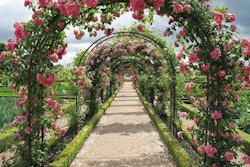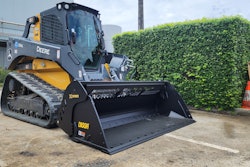Ever since foreign settlers arrived in North America they have brought along non-native plants, some of them on purpose and others by accident. But the invaders were introduced nonetheless and since then natives have struggled to preserve their territory.
In the recent years, horticulturists and homeowners alike have tried to make a conscious effort to control these invasive plants and educate people about the threat they pose to North American flora. Not all exotic plants are considered invasive, and some plants are only considered invasive in certain regions.
The National Invasive Species Council defines an invasive species as “a species that is non-native to the ecosystem under consideration and whose introduction causes or is likely to cause economic or environmental harm or harm to human health.”
There are several traits that can be noted in exotic plants that are either invasive or could become invasive. They include having a high seed production and good seed viability, a lack of natural predators and an extended flowering period that allow it to outcompete native plants.
Some of these plants have been around for so long that your clients may not even know that certain plants are invasive, but typically the name, such as Chinese privet, is a dead giveaway it’s not from North America.
If you have a customer who is wanting to make a change, or loves a certain invasive plant but doesn’t want to exacerbate the problem, you can suggest these native plants as alternatives to certain popular exotic plants.
Invasive – Japanese honeysuckle (Lonicera japonica)
 Japanese honeysuckle
Japanese honeysucklePhoto: Joel/Flickr
This plant is classified as a noxious weed in Texas, Illinois and Virginia and is banned in New Hampshire. It is an aggressive vine that can choke out native shrubs and trees while forming a monoculture that prevents the establishment of other native plants. If your client is looking for a fragrant replacement for the vanilla-scented Japanese honeysuckle, trumpet honeysuckle (Lonicera sempervirens) has showy, scented scarlet flowers and is a fast grower as well. It can work as a vine as well as a groundcover.
Another option is Carolina Jessamine or jasmine (Gelsemium sempervirens) which has bright fragrant yellow flowers. Both of these natives attract hummingbirds and birds.
 A native alternative would be trumpet honeysuckle.
A native alternative would be trumpet honeysuckle.Photo: caligula1995/Flickr
Invasive – Japanese wisteria (Wisteria floribunda)
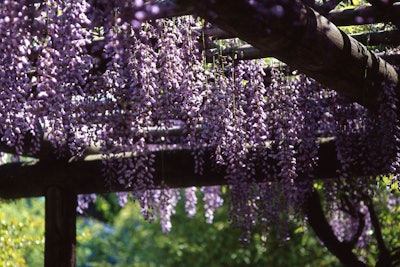 Japanese wisteria
Japanese wisteriaPhoto: mrhayata/Flickr
It was brought to the United States in the 1830s and has become one of the most romanticized flowering garden plants. Beloved for its gorgeous drooping bundles of grape-like flowers, wisteria is another highly aggressive plant and can displace natives and kill sizable trees. Less aggressive, native options are the American or Kentucky wisteria species (Wisteria frutescens or W. macrostachya). The blooms are fragrant but slightly smaller than its Asian counterpart.
 A native alternative would be American wisteria.
A native alternative would be American wisteria.Photo: wplynn/Flickr
Invasive – Winged burning bush (Euonymus alatus)
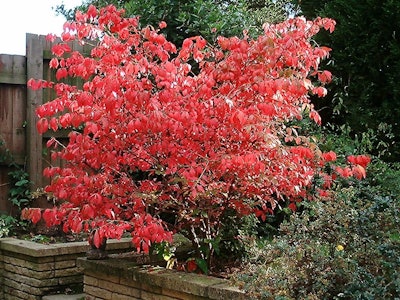 Winged burning bush
Winged burning bushPhoto: Wikipedia
Native to China, Japan and Korea, this deciduous shrub has showstopper foliage in the fall and there is no guessing as to where its name comes from. Birds also love the fruit of this shrub, spreading its seeds to wild environments rapidly. The importation and sale of this plant is prohibited in Massachusetts and New Hampshire. It’s considered invasive in woodlands of eastern North America. Another bird-friendly and fiery colored shrub that is native is red chokeberry (Aronia arbutifolia).
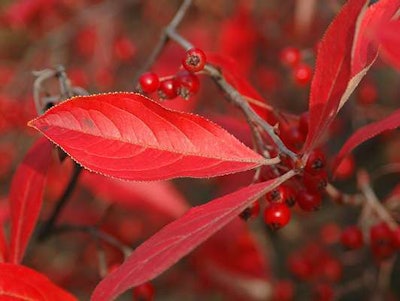 A native alternative would be red chokeberry.
A native alternative would be red chokeberry.Photo: oregonstate.edu
Invasive – Mimosa tree (Albizia julibrissin)
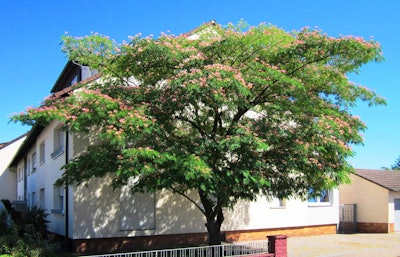 Mimosa or the Persian silk tree
Mimosa or the Persian silk treePhoto: Wikipedia
Also called the Persian silk tree, mimosas tend to grow in dry plains, sandy valleys and uplands. It has numerous seeds that remain fertile for long periods of time and can be carried surprisingly far distances. It has fragrant pink flowers, but the redbud tree (Cercis canadensis) also has showy pink flowers and attracts bees and butterflies. It also has bright yellow foliage in the fall.
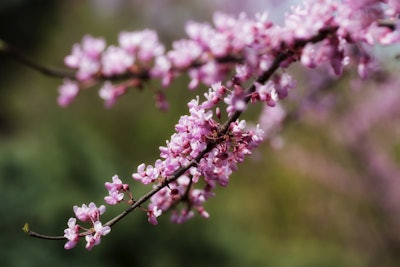 A native alternative would be Eastern redbud.
A native alternative would be Eastern redbud.Photo: Steve Byrne/Flickr
Invasive – Zebra grass (Miscanthus sinensis)
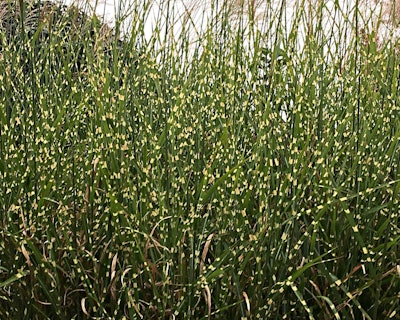 Zebra grass, also known as Chinese silver grass.
Zebra grass, also known as Chinese silver grass.Photo: Phil and Jo Schiffbauer/Flickr
Ornamental grasses have been under serious scrutiny lately as to which are truly invasive and non-invasive, but even as popular as zebra grass is, also called maiden grass and Chinese silver grass, it is still invasive in certain areas. If your client is looking for some visually enthralling ornamental grasses, pink muhly grass (Muhlenbergia capilaris) is a darling of the National Arboretum with its rosy haze of pink plumes.
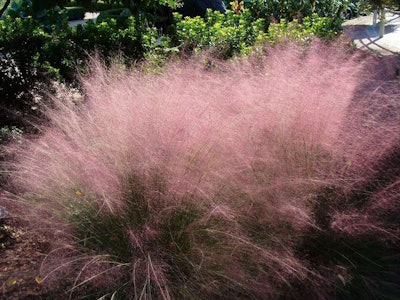 A native alternative would be pink muhly grass.
A native alternative would be pink muhly grass.Photo: Ken Kennedy/Flickr
Invasive – European privet (Ligustrum vulgare)
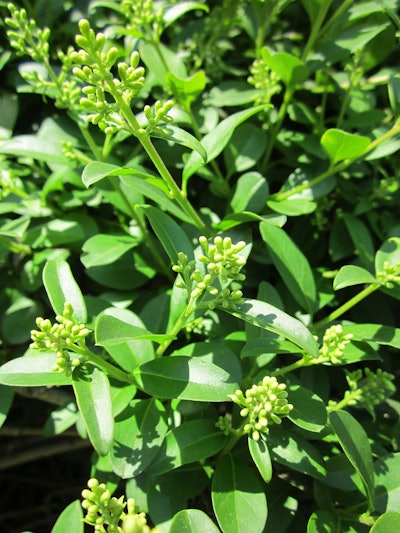 European privet
European privetPhoto: Pixabay
Also called common privet, this semi-evergreen shrub is popular for hedges and tolerates a wide range of conditions. However, they can form dense thickets and shade out native understory plants. It also has black fruit that birds eat and then further spread to wild areas. A native alternative that can also form a good shrub border or hedge is limerock arrowwood (Vibrunum bracteatum) which attracts bees, birds and butterflies.
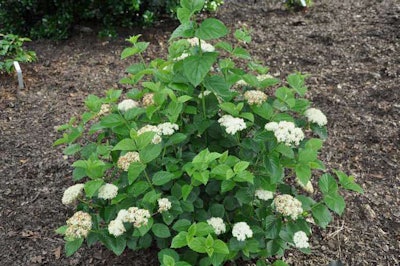 A native alternative would be limerock arrowwood.
A native alternative would be limerock arrowwood.Photo: JCRaulston Arboretum

